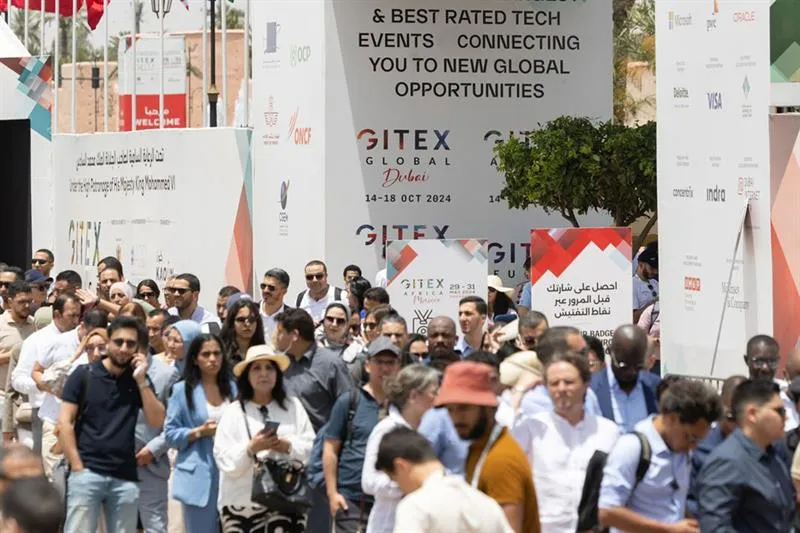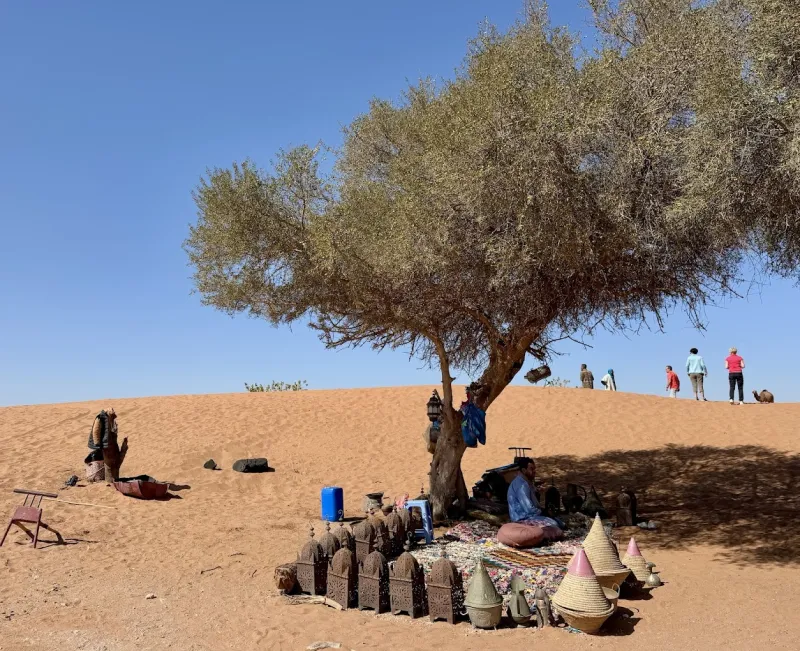Exploring Agadir’s Souks and Traditional Markets: A Vibrant Journey Through Local Crafts, Spices, and Textiles
15 Mar 2025Agadir is much more than a sun-kissed beach destination—it's a gateway to Morocco’s rich cultural heritage, where the ancient and modern blend harmoniously. At the heart of this cultural tapestry lie Agadir’s bustling souks and traditional markets. These lively centers are not only places to shop but also hubs of social interaction, artistic expression, and centuries-old traditions. In this comprehensive guide, we invite you to explore the vibrant markets of Agadir, where local crafts, aromatic spices, intricate textiles, and much more await your discovery.
A Glimpse into Agadir’s Cultural Soul
The Historical Significance of Souks
Souks have been the backbone of Moroccan urban life for centuries. Traditionally, these markets served as the commercial and social centers of cities, offering everything from food and clothing to art and artisan goods. In Agadir, the souks are a living museum where you can witness the legacy of Moroccan trade, craftsmanship, and hospitality. Even as the city modernizes, these markets remain integral to Agadir’s identity, echoing the rhythms of daily life and the communal spirit of its residents.
The Transformation of Agadir After the 1960 Earthquake
Agadir’s modern history is marked by its rebuilding after the devastating earthquake of 1960. While the city’s architecture was largely modernized, the traditional souks retained their charm and significance. Today, these markets serve as a reminder of Agadir’s resilience and enduring connection to its cultural roots. The souks, with their labyrinthine alleyways and colorful stalls, offer an authentic glimpse into a world where history and modernity coalesce.
Navigating the Vibrant Markets of Agadir
The Souk El Had: A Must-Visit Destination
One of the most renowned markets in Agadir is Souk El Had. This sprawling marketplace is a sensory overload, teeming with an array of products that cater to every taste. From exotic spices and handcrafted jewelry to traditional clothing and home decor, Souk El Had is a treasure trove for both locals and tourists. Visitors can wander its narrow lanes, listen to the melodic banter of vendors, and feel the pulse of everyday Moroccan life.
Local Crafts: In Souk El Had, every stall tells a story. Artisans display intricately carved wooden pieces, hand-woven baskets, and beautifully painted ceramics. Each craft item is imbued with cultural significance and is often the result of skills passed down through generations.
Aromatic Spices: The spice section of Souk El Had is a feast for the senses. The air is thick with the fragrance of saffron, cumin, turmeric, and ras el hanout—a traditional Moroccan spice blend. These spices not only add flavor to Moroccan dishes but also represent a key aspect of the country’s culinary heritage.
Textiles and Traditional Clothing: The market is also famous for its vibrant textiles. Traditional Moroccan garments, such as djellabas and kaftans, are displayed alongside an assortment of handwoven fabrics and intricately embroidered pieces. Shoppers can find everything from casual wear to elegant formal attire, each piece reflecting the artistry and history of Moroccan design.
Smaller Neighborhood Markets: Hidden Gems
While Souk El Had is a must-see, Agadir is dotted with smaller, neighborhood markets that offer unique, more intimate shopping experiences. These markets often cater to specific communities and are perfect for those who wish to avoid the hustle and bustle of larger markets.
Local Produce and Handcrafted Goods: In these neighborhood souks, vendors offer locally grown fruits, vegetables, and handmade goods. The produce is fresh and vibrant, often sourced from nearby farms, ensuring that you experience the authentic flavors of the region.
Community and Connection: Smaller markets provide an opportunity to connect with local vendors on a personal level. Conversations here often reveal fascinating stories about the history of the market, the origin of certain crafts, and the deep-rooted traditions of Agadir’s communities.
The Art of Haggling: An Essential Souk Skill
Understanding the Bargaining Culture
Bargaining is not merely a transactional process in Moroccan souks—it’s an art form and a cultural ritual. Haggling allows buyers and sellers to interact in a respectful and engaging manner. This process is often characterized by good-natured banter, humor, and a genuine exchange of cultural values.
Mutual Respect: While negotiating, it’s important to remember that haggling is expected and even enjoyed by vendors. A friendly smile, a polite tone, and a willingness to engage can lead to not only better prices but also meaningful interactions.
Strategies for Success: Visitors should always start with a price lower than what they are willing to pay. This gives room for negotiation and can often result in a fair compromise that reflects the value of the item while respecting the vendor’s effort.
Tips for First-Time Visitors
For those new to the world of Moroccan souks, a few simple tips can make the experience more enjoyable:
Do Your Research: Familiarize yourself with the typical prices of items you wish to buy. This preparation will give you confidence during negotiations.
Practice Patience: Souk visits can be overwhelming, especially for first-timers. Take your time to explore, ask questions, and appreciate the vibrant atmosphere.
Respect Local Customs: Always be polite and respectful. Remember that the souk is a place of work for many locals, and maintaining a friendly demeanor will enrich your experience.
A Feast for the Senses: The Colors, Sounds, and Scents of Agadir’s Markets
The Visual Spectacle
The markets in Agadir are a riot of color and design. Every corner bursts with hues that reflect the region’s natural beauty and artistic heritage.
Vivid Displays: Stalls draped in bright fabrics and adorned with handcrafted ornaments create a visually stimulating environment. The interplay of colors in textiles, ceramics, and jewelry reflects the diversity of Moroccan art.
Architectural Charm: Traditional market structures, often constructed from local materials like clay and wood, add to the authentic ambiance. The open-air layout and maze-like alleys encourage exploration and discovery.
The Soundscape of the Souks
The lively sounds of Agadir’s markets are as integral to the experience as the sights and smells.
Vendors and Shoppers: The constant hum of conversation, the friendly calls of vendors, and the laughter of shoppers create a dynamic and engaging soundscape.
Cultural Melodies: Traditional Moroccan music, often played on portable instruments or through small speakers, adds a rhythmic background that enhances the overall atmosphere of the markets.
The Aromas of Moroccan Spices and Fresh Produce
One of the most enchanting aspects of visiting a Moroccan souk is the rich tapestry of aromas that envelops you.
Exotic Spices: As you wander through the market, the heady scent of spices fills the air. Aromas of cumin, coriander, and mint mingle with the sweetness of preserved lemons and the warmth of saffron.
Fresh Bounty: In the produce sections, the smell of freshly harvested fruits and vegetables provides a refreshing contrast. These natural scents evoke the agricultural abundance of the region and contribute to the overall sensory experience.
Celebrating Local Crafts and Artisanal Techniques
The Mastery of Moroccan Artisans
Moroccan artisans are renowned for their exceptional craftsmanship and attention to detail. Their work is a testament to the enduring traditions of the region, combining functionality with artistic beauty.
Hand-Carved Woodwork: One of the standout crafts in Agadir’s souks is the intricately carved wooden items. Whether it’s a decorative panel, a piece of furniture, or small trinkets, these items reflect the meticulous artistry of local carpenters.
Ceramics and Pottery: Moroccan pottery is celebrated for its vibrant colors and unique patterns. From everyday dishes to decorative vases, ceramic items in Agadir’s markets are created using age-old techniques passed down through generations.
Textiles and Weaving: The traditional weaving techniques used to create rugs, blankets, and garments are another highlight of the souks. These textiles are not only visually appealing but also carry deep cultural significance, representing the heritage of the Berber people and other local communities.
The Role of Traditional Markets in Preserving Culture
Beyond commerce, the souks play a crucial role in preserving Moroccan culture and traditions. They are living repositories of artisanal knowledge and cultural narratives.
Cultural Exchange: Souks serve as meeting points where stories, techniques, and traditions are shared. Vendors often explain the origins and meanings behind their products, passing on cultural heritage to visitors.
Sustainability and Tradition: By supporting local artisans and traditional markets, visitors contribute to the preservation of these time-honored practices. The continued patronage of local crafts ensures that these skills are not lost in the face of modernization.
Exploring Beyond Souk El Had: Other Markets and Attractions
Regional Markets and Specialty Shops
While Souk El Had is the centerpiece of Agadir’s market scene, there are numerous other markets and specialty shops worth exploring. These smaller markets offer unique products that might not be found in the larger souks.
Artisan Boutiques: Scattered throughout the city are small boutiques dedicated to specific crafts. These shops often specialize in jewelry, leather goods, or handcrafted décor, each offering a distinct taste of Moroccan artistry.
Local Food Markets: For those interested in gastronomy, local food markets present a delightful array of regional specialties. Fresh olives, artisanal cheeses, and homemade preserves can be sampled and purchased, providing a deeper insight into Morocco’s culinary traditions.
Cultural Landmarks and Museums
A visit to Agadir’s markets can be complemented by exploring the city’s cultural landmarks and museums. These sites provide historical context and a broader understanding of the traditions behind the items sold in the souks.
Agadir Museum: Delve into the history of Agadir through artifacts, photographs, and exhibits that chronicle the city’s transformation over the decades.
Local Galleries: Many local art galleries showcase works by contemporary Moroccan artists, bridging the gap between traditional crafts and modern artistic expression.
How to Make the Most of Your Souk Experience
Planning Your Visit
Maximizing your visit to Agadir’s souks requires a bit of planning. Here are some tips to ensure you have a rewarding and hassle-free experience:
Timing Is Everything: Souks are often busiest during the early morning hours when fresh produce arrives. Visiting early can help you avoid the crowds and see the market at its liveliest.
Dress Comfortably: Wear comfortable clothing and shoes, as exploring the maze-like alleys can involve a lot of walking. Consider light, breathable fabrics to stay cool in the warm Moroccan climate.
Carry Local Currency: While some vendors may accept credit cards, many transactions are done in cash. Having local currency on hand will facilitate smoother transactions and may even help you secure a better price.
Engaging with Local Vendors
One of the most rewarding aspects of visiting a souk is the personal interaction with local vendors.
Ask Questions: Don’t hesitate to inquire about the origin of a product or the story behind a particular craft. Vendors are usually proud to share their knowledge and traditions.
Learn a Few Words: Familiarizing yourself with basic Arabic or French greetings can go a long way. Even a simple “salam” (hello) can foster a friendly interaction and may even lead to insider recommendations.
Respect the Process: Remember that haggling is part of the culture. Approach it with a sense of fun and respect, and you might leave with not only a great bargain but also a memorable conversation.
The Lasting Impact of Agadir’s Souks
A Portal to Moroccan Heritage
Agadir’s souks are more than just markets—they are living embodiments of Moroccan history and tradition. Every item, whether it’s a handcrafted rug, a jar of spice, or a piece of intricate jewelry, carries a story that has been woven into the fabric of local culture. By exploring these markets, you not only bring home unique souvenirs but also a deeper understanding of the country’s artistic and cultural legacy.
Preserving a Living Tradition
The traditional markets of Agadir continue to thrive despite the rapid pace of modernization. They stand as a testament to the resilience of local customs and the enduring appeal of handcrafted goods. By supporting these markets, visitors play a crucial role in sustaining local industries and preserving techniques that have been honed over centuries.
Conclusion: Embrace the Spirit of Agadir’s Markets
Agadir’s souks and traditional markets offer an immersive experience that is as educational as it is exhilarating. From the labyrinthine alleys of Souk El Had to the hidden gems of smaller neighborhood markets, every corner of Agadir vibrates with life, color, and tradition. Whether you’re in search of unique handcrafted items, the perfect spice blend, or simply an authentic cultural experience, these markets provide a window into the soul of Morocco.
The art of haggling, the delightful sensory overload of vibrant colors, and the enduring stories behind each artisan’s craft all contribute to a rich tapestry of experiences waiting to be discovered. As you explore these bustling centers, you become part of a living tradition—a tradition that honors the past while embracing the present.
So pack your curiosity, bring an open mind, and set out on a journey through Agadir’s souks and traditional markets. Let the aromas, sights, and sounds guide you as you delve into the heart of a city that cherishes its heritage and celebrates its future. In Agadir, every market visit is a reminder that the essence of Morocco is best experienced through its people, its traditions, and its timeless craftsmanship.
Embrace the vibrant spirit of Agadir, and let the markets be your guide to a world where every bargain is a story, every craft is a piece of art, and every spice is a memory waiting to be savored.
With its irresistible mix of history, art, and lively community spirit, Agadir’s traditional markets are an essential destination for anyone looking to experience the authentic flavors and cultural richness of Morocco. Whether you are a seasoned traveler or a curious newcomer, the souks of Agadir invite you to embark on a journey that goes far beyond shopping—it is a celebration of life, creativity, and enduring heritage. Enjoy your adventure, and let the magic of Agadir’s markets transform your understanding of Moroccan culture.
Hi, I'm Camila Elise. I'm a passionate writer and design enthusiast at rents.ma, blending modern insights with the timeless elegance of Moroccan culture. Join me as I explore innovative ideas to transform your living space into a true reflection of your style.




